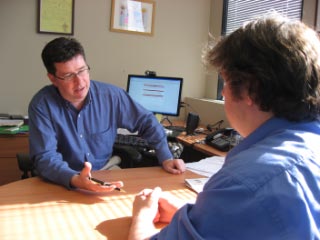Competitive pitches for new business. They’re the bane of any agency or firm that must participate. And they’re also an unavoidable fact of life.
Public relations practitioners get up every day looking forward to doing great work for their clients. But in order to get the opportunity to do this, we first must win the confidence of those clients.
This is best done by developing a reputation for doing outstanding work and the network of people for whom we have done this who will then call us directly or provide us with referrals. In this situation, the battle is nearly won by the time that you hear the words, "I have this challenge that I’d like your advice on…"
However, not all relationships originate in this way.
Competitions: Costly and Capricious
Many potential clients, especially large corporations and governments, feel they need to conduct formal competitions for their business.
The way these competitions are run is highly idiosyncratic. Short list. Long list. With creative presentations. Without creative presentations. Proposal only. Proposal plus presentation. Budget revealed in advance? Maybe. Maybe not. A blind competition in which you do not know the identities of the competitors? More often than should be the case.
And costly. Boy, does it cost a lot to win a competition. A determined firm will pull in a team to research the client, the client’s industry and the client’s competitors. Brainstorm(s) will be held to develop ideas. A formal proposal will be prepared. Artwork and mock ups will be created for visual, physical and Web elements of the program. Cost quotes will be obtained and a budget prepared. All of this will be pulled together into a bid package. Then a PowerPoint will be prepared to support the team presentation, which will itself be rehearsed. Finally the team will get a chance to present their ideas to the client.
All in all, thousands and probably tens of thousands of dollars worth of time and direct expenses are invested in a competitive bid. So, it’s only natural that communications firms pine for a simple bid process that is fair and transparent.
Agency Link says it can be better
Now, a new firm, Agency Link , wants to get into the middle of the selection process with a promise to help clients find the PR partners who best meet their needs.
Agency Link offers a range of services, including audits and evaluations of existing client-supplier relationships, assessments of RFPs, assistance with search and selection of PR firms, and contract negotiations. Agency Link will work for the clients, not the PR firms. And they have published a Code of Conduct to reassure both clients and PR firms that they will conduct themselves in a fair and transparent fashion.
This is a new concept in Canada. And most PR firm heads I know are quietly supportive of Agency Link, hoping that it will deliver on the promised of a more effective selection process for those clients who use its services.
Agency Link is the brainchild of two co-founders, Stan Didzbalis and Sheila Corriveau . Both Stan and Sheila have extensive experience as PR firm principals and on the client side. Stan was the founder of BenchMark Communications, which he grew to over 50 consultants before he sold it to Omnicom. Before establishing his agency, he worked in communications at two bluechip corporations, IBM and Inco. Sheila is a former CEO of Porter Novelli in Canada. Her corporate experience includes leadership roles in several communications functions at The Dynacare Health Group.
Interview with Stan Didzbalis
I caught up with Stan Didzbalis this week in Toronto. He took a few minutes to talk to me about what Agency Link is up to.
Stan told me that there are two sides to Agency Link’s business. "One is to help clients find the right agency fit – whether it be a public relations agency, a digital marketing agency, an investor relations firm. … The second part of our business is a consulting practice. We consult with clients to help them optimize their agency relationships and get the best that they can out of their agencies."
The benefits to agencies? According to Stan, "We hope to take some of the inconsistencies out of the search process. We hope to eliminate cattle calls. We really want our clients to minimize the agency churn. The best way we can do that it to educate the clients on how best to utilize an agency resource."
Here. Here. I’ve gotta wish Stan and Sheila total success in achieving these objectives.
You can watch the video of my interview with Stan Didzbalis here.

 Thomas Vander Wal’s post caused me to take a second look at Ma.gnolia as my preferred social bookmarking tool. Thomas says,
Thomas Vander Wal’s post caused me to take a second look at Ma.gnolia as my preferred social bookmarking tool. Thomas says, From the first word I read, I am assessing the writer as a potential employee. And I am amazed at how poorly most people present themselves in these requests.
From the first word I read, I am assessing the writer as a potential employee. And I am amazed at how poorly most people present themselves in these requests.